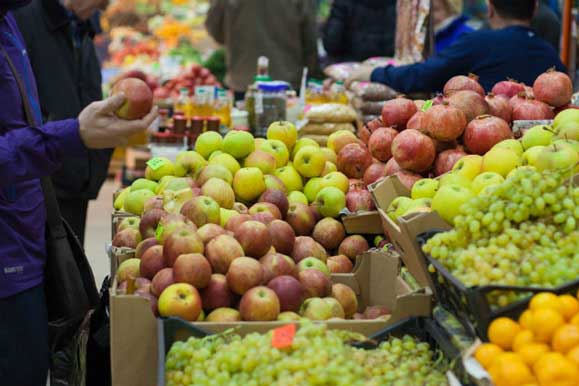Reviewed by Anurag Mishra (Sr. Technical Consultant)

Colour is the foremost attribute that impacts the buyer’s choice. He picks the food from the rack by guessing the taste from its colours. Usually, food items are made to have similar colours as of their raw materials. Strawberry yoghurt will have a pinkish colour, chilli potato wedges will have hint of red or green colour to represent the degree of hotness. If beverages are transparent, this means they are less pulpy or processed chemically to induce the natural taste artificially. As a buyer, we try to relate the colour to its raw materials. We all have our visual parameters to assess the quality by analysing optical characteristics.
Opaque – Mayonnaise, ketchup, pulses, dairy products, etc.
Translucent – Jellies, juices, candies, etc.
Transparent – Edible oil, energy drinks, soft drinks, alcoholic drinks, etc.
The optical characteristics are often measured by the principle of reflection and transmission of light. Based on these principles, two devices named colorimeter and spectrophotometers are employed. These devices quantify the colour by evaluating the primary components, red, green, blue.
Food colour measurement Food is segregated in categories like, baked goods, powdered goods like spices, liquids, semi liquids, solids, paste and so on. Also, all these forms have different optical characteristics as we have discussed above. It’s quite difficult to achieve high precision for different forms with one device. So, let’s shed some highlight on different colour measurement techniques for different forms.
Baked Goods – It is very easy to identify baked goods with visual observation. What major concern here is under cooking and over cooking. Say, cookies. When batches are released in small bakeries, they have their time and temperature fixed for every batch. But due to some power interruption or fuel interruption in clay ovens, the cooking might stop in between. The operator can continue the process again, but the heat retained during the interruption supports slow cooking. In such situation, the timer may start again from where it was halted but slow cooking is continued until temperature settles to ambient. To estimate the undercooking and overcooking, the colour can be measured and compared with master colour. In this process, opaque colour measurement principles are used.
Beverages– Soft drinks, energy drinks, juices, wines, scotches, etc. all come under the category of beverages. They generally have translucent property. Drinks that have natural ingredients in them, often face batch wise colour discrepancy. Say wines, they are made with grapes and it is natural to have a colour difference in grapes which creates the effect of turbidity in the end product. If all bottles have the same age, then there should not be any such differences. Here the principle of transmittance can be employed to quantify the colour difference. Food colour measurement devices like portable spectrophotometer easily catch such flaws and help the quality managers to take the appropriate measures before bottling.
Fresh Food – Freshness, taste and life of fruits, vegetables and meat are determined by their colours. Take the example of spinach. It has bright green leaves. If not preserved in right way, the leaves started to loose its sheen and appear dull. Similarly, other fruits and vegetables have the same tendency. The taste of fruits like grapes, watermelon, oranges etc. can be easily estimated with their appearance. So, every time such food items are used as raw materials, their colour is a considerable factor. If procured raw materials don’t have appropriate colour, it would create a difference in the subsequent products. If tomatoes don’t have that bright red colour, the ketchup produced will have a considerable different appearance. And, to fill this gap, the additive is used.
Cereals – Wheat, rice, millets, pulses, flours, corn, sugar, etc. are identified with their colours. Nowadays, to make them appealing to the buyer they are polished chemically. This enhances the visual appearance but washes out many good nutrients during the processing. This is the only case where a dull appearing cereal is good than a shiny batch. If there is a wheat flour manufacturer, he must look for genuinely looking wheat grains for producing good quality flour. In fact, colour measurement of cereals is very important in processed food companies, where grains are the base of many items like corn flakes, fibre biscuits, multi grain food. All such items are opaque and quantified by the principle of reflection.
Food colour measurement devices like colorimeter and spectrophotometer are used widely in this industry. They help in managing and controlling the quality of food. It is very important for manufacturers to maintain the batch wise consistency.